Menu
Close
- Careers & HR Services
-
Post a JobPost a Job
-
Explore Environmental Career ProfilesExplore Environmental Career Profiles
-
Careers in the EV Battery Supply Chain SectorCareers in the EV Battery Supply Chain Sector
-
Free Career ResourcesFree Career Resources
-
Environmental Jobs Compensation GuideEnvironmental Jobs Compensation Guide
-
Compensation Data for Canada’s Environmental RolesCompensation Data for Canada’s Environmental Roles
-
- Programs & Projects
- Employment Programs
- Projects & Toolkits
- Blue Economy
- Ocean Alliance Canada
- Zero-Emission Vehicle Awareness
- Project IGNITE – GHG
- Accelerating Net-Zero
- Net-Zero Work-Integrated Learning
- Indigenous Codes Acceleration Program
- Environmental Accessibility & Inclusion
- Women Reclaiming Leadership
- GHG Reduction Toolkit for SMEs
- Environmental Skills for Success
- Cultivating and Nurturing Employer Readiness for Green Growth (C-NER-G)
-
Digital Skills For YouthDigital Skills For Youth
-
Science Horizons Youth InternshipScience Horizons Youth Internship
-
Student Work Placement (Co-op)Student Work Placement (Co-op)
-
Youth In Natural ResourcesYouth In Natural Resources
-
Blue EconomyBlue Economy
-
Ocean Alliance CanadaOcean Alliance Canada
-
Zero-Emission Vehicle AwarenessZero-Emission Vehicle Awareness
-
Project IGNITE (GHG)Project IGNITE (GHG)
-
Accelerating Net-ZeroAccelerating Net-Zero
-
Net-Zero Work-Integrated LearningNet-Zero Work-Integrated Learning
-
Environmental Accessibility & InclusionEnvironmental Accessibility & Inclusion
-
Indigenous Codes Acceleration ProgramIndigenous Codes Acceleration Program
-
Women Reclaiming LeadershipWomen Reclaiming Leadership
-
GHG Reduction Toolkit for SMEsGHG Reduction Toolkit for SMEs
-
Environmental Skills for SuccessEnvironmental Skills for Success
-
Pay for PerformancePay for Performance
-
Cultivating and Nurturing Employer Readiness for Green Growth (C-NER-G)Cultivating and Nurturing Employer Readiness for Green Growth (C-NER-G)
- Training & Education
- Training
- BEAHR Indigenous Program
- Post Secondary Accreditation
- International Accreditation
- Royal Roads University
-
Train Your EmployeesTrain Your Employees
-
Pay for PerformancePay for Performance
-
Training Course CertificationTraining Course Certification
-
Curriculum OverviewCurriculum Overview
-
Programming in Indigenous CommunitiesProgramming in Indigenous Communities
-
Become a BEAHR Certified TrainerBecome a BEAHR Certified Trainer
-
Become AccreditedBecome Accredited
-
Accredited ProgramsAccredited Programs
-
Become AccreditedBecome Accredited
-
International Accredited ProgramsInternational Accredited Programs
-
Bachelor's in Environmental PracticeBachelor's in Environmental Practice
-
Graduate Certificate in Science and Policy of Climate ChangeGraduate Certificate in Science and Policy of Climate Change
-
Master's in Environmental PracticeMaster's in Environmental Practice
-
Certificate in Indigenous Environmental LeadershipCertificate in Indigenous Environmental Leadership
- Events & News
- Ocean Alliance Canada Conference
- ECOWorks Career Fair
- ECO IMPACT
- 3rd Global Tourism Resilience Day Conference and Expo
- Green Horizons Roadshow
- EP® Meetups
- Virtual Career Fair
- Blog & News
- Our Social Media Feeds
-
Ocean Alliance Canada ConferenceOcean Alliance Canada Conference
-
ECOWorks Career FairECOWorks Career Fair
-
ECO IMPACTECO IMPACT
-
3rd Global Tourism Resilience Day3rd Global Tourism Resilience Day
Conference and Expo
Conference and Expo -
Green Horizons RoadshowGreen Horizons Roadshow
-
EP® MeetupsEP® Meetups
-
Virtual Career FairVirtual Career Fair
-
Our Social Media PlatformsOur Social Media Platforms
- EP® Designations & Membership
-
EP® Employer DesignationEP® Employer Designation
-
EP® Auditor DesignationEP® Auditor Designation
-
EP® DesignationEP® Designation
-
EPt (in-training) DesignationEPt (in-training) Designation
-
EPt Student MembershipEPt Student Membership
-
SBEP DesignationsSBEP Designations
-
EP® (GHG) DesignationEP® (GHG) Designation
-
EP® Specialization GuideEP® Specialization Guide
-
EP® Member ReportEP® Member Report
-
EP® Member LoginEP® Member Login
-
- Research & Resources
- Research & Reports Library
- Compensation Guide
- Job Market Trends
- National Occupational Standards (N.O.S)
- Join our Research Community
-
Research & Reports LibraryResearch & Reports Library
-
Compensation GuideCompensation Guide
-
Job Market TrendsJob Market Trends
-
National Occupational Standards (N.O.S)National Occupational Standards (N.O.S)
-
Join our Research CommunityJoin our Research Community
- About ECO Canada
- About Us
- What We Do
- Annual Report
- Leadership & Board
- Work for ECO Canada
- Giving Back
- Our Partners & Sponsors
- Advertise with Eco Canada
- Contact Us
-
What We DoWhat We Do
-
Annual ReportAnnual Report
-
Leadership & BoardLeadership & Board
-
Work for ECO CanadaWork for ECO Canada
-
Giving BackGiving Back
-
Our Partners & FundersOur Partners & Funders
-
Advertise with ECO CanadaAdvertise with ECO Canada
-
Contact UsContact Us
- Careers & HR Services
-
Post a JobPost a Job
-
Explore Environmental Career ProfilesExplore Environmental Career Profiles
-
Careers in the EV Battery Supply Chain SectorCareers in the EV Battery Supply Chain Sector
-
Free Career ResourcesFree Career Resources
-
Environmental Jobs Compensation GuideEnvironmental Jobs Compensation Guide
-
Compensation Data for Canada’s Environmental RolesCompensation Data for Canada’s Environmental Roles
-
- Programs & Projects
- Employment Programs
- Projects & Toolkits
- Blue Economy
- Ocean Alliance Canada
- Zero-Emission Vehicle Awareness
- Project IGNITE – GHG
- Accelerating Net-Zero
- Net-Zero Work-Integrated Learning
- Indigenous Codes Acceleration Program
- Environmental Accessibility & Inclusion
- Women Reclaiming Leadership
- GHG Reduction Toolkit for SMEs
- Environmental Skills for Success
- Cultivating and Nurturing Employer Readiness for Green Growth (C-NER-G)
-
Digital Skills For YouthDigital Skills For Youth
-
Science Horizons Youth InternshipScience Horizons Youth Internship
-
Student Work Placement (Co-op)Student Work Placement (Co-op)
-
Youth In Natural ResourcesYouth In Natural Resources
-
Blue EconomyBlue Economy
-
Ocean Alliance CanadaOcean Alliance Canada
-
Zero-Emission Vehicle AwarenessZero-Emission Vehicle Awareness
-
Project IGNITE (GHG)Project IGNITE (GHG)
-
Accelerating Net-ZeroAccelerating Net-Zero
-
Net-Zero Work-Integrated LearningNet-Zero Work-Integrated Learning
-
Environmental Accessibility & InclusionEnvironmental Accessibility & Inclusion
-
Indigenous Codes Acceleration ProgramIndigenous Codes Acceleration Program
-
Women Reclaiming LeadershipWomen Reclaiming Leadership
-
GHG Reduction Toolkit for SMEsGHG Reduction Toolkit for SMEs
-
Environmental Skills for SuccessEnvironmental Skills for Success
-
Pay for PerformancePay for Performance
-
Cultivating and Nurturing Employer Readiness for Green Growth (C-NER-G)Cultivating and Nurturing Employer Readiness for Green Growth (C-NER-G)
- Training & Education
- Training
- BEAHR Indigenous Program
- Post Secondary Accreditation
- International Accreditation
- Royal Roads University
-
Train Your EmployeesTrain Your Employees
-
Pay for PerformancePay for Performance
-
Training Course CertificationTraining Course Certification
-
Curriculum OverviewCurriculum Overview
-
Programming in Indigenous CommunitiesProgramming in Indigenous Communities
-
Become a BEAHR Certified TrainerBecome a BEAHR Certified Trainer
-
Become AccreditedBecome Accredited
-
Accredited ProgramsAccredited Programs
-
Become AccreditedBecome Accredited
-
International Accredited ProgramsInternational Accredited Programs
-
Bachelor's in Environmental PracticeBachelor's in Environmental Practice
-
Graduate Certificate in Science and Policy of Climate ChangeGraduate Certificate in Science and Policy of Climate Change
-
Master's in Environmental PracticeMaster's in Environmental Practice
-
Certificate in Indigenous Environmental LeadershipCertificate in Indigenous Environmental Leadership
- Events & News
- Ocean Alliance Canada Conference
- ECOWorks Career Fair
- ECO IMPACT
- 3rd Global Tourism Resilience Day Conference and Expo
- Green Horizons Roadshow
- EP® Meetups
- Virtual Career Fair
- Blog & News
- Our Social Media Feeds
-
Ocean Alliance Canada ConferenceOcean Alliance Canada Conference
-
ECOWorks Career FairECOWorks Career Fair
-
ECO IMPACTECO IMPACT
-
3rd Global Tourism Resilience Day3rd Global Tourism Resilience Day
Conference and Expo
Conference and Expo -
Green Horizons RoadshowGreen Horizons Roadshow
-
EP® MeetupsEP® Meetups
-
Virtual Career FairVirtual Career Fair
-
Our Social Media PlatformsOur Social Media Platforms
- EP® Designations & Membership
-
EP® Employer DesignationEP® Employer Designation
-
EP® Auditor DesignationEP® Auditor Designation
-
EP® DesignationEP® Designation
-
EPt (in-training) DesignationEPt (in-training) Designation
-
EPt Student MembershipEPt Student Membership
-
SBEP DesignationsSBEP Designations
-
EP® (GHG) DesignationEP® (GHG) Designation
-
EP® Specialization GuideEP® Specialization Guide
-
EP® Member ReportEP® Member Report
-
EP® Member LoginEP® Member Login
-
- Research & Resources
- Research & Reports Library
- Compensation Guide
- Job Market Trends
- National Occupational Standards (N.O.S)
- Join our Research Community
-
Research & Reports LibraryResearch & Reports Library
-
Compensation GuideCompensation Guide
-
Job Market TrendsJob Market Trends
-
National Occupational Standards (N.O.S)National Occupational Standards (N.O.S)
-
Join our Research CommunityJoin our Research Community
- About ECO Canada
- About Us
- What We Do
- Annual Report
- Leadership & Board
- Work for ECO Canada
- Giving Back
- Our Partners & Sponsors
- Advertise with Eco Canada
- Contact Us
-
What We DoWhat We Do
-
Annual ReportAnnual Report
-
Leadership & BoardLeadership & Board
-
Work for ECO CanadaWork for ECO Canada
-
Giving BackGiving Back
-
Our Partners & FundersOur Partners & Funders
-
Advertise with ECO CanadaAdvertise with ECO Canada
-
Contact UsContact Us

